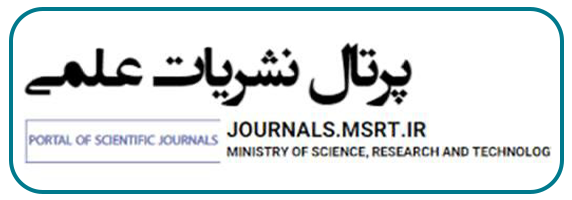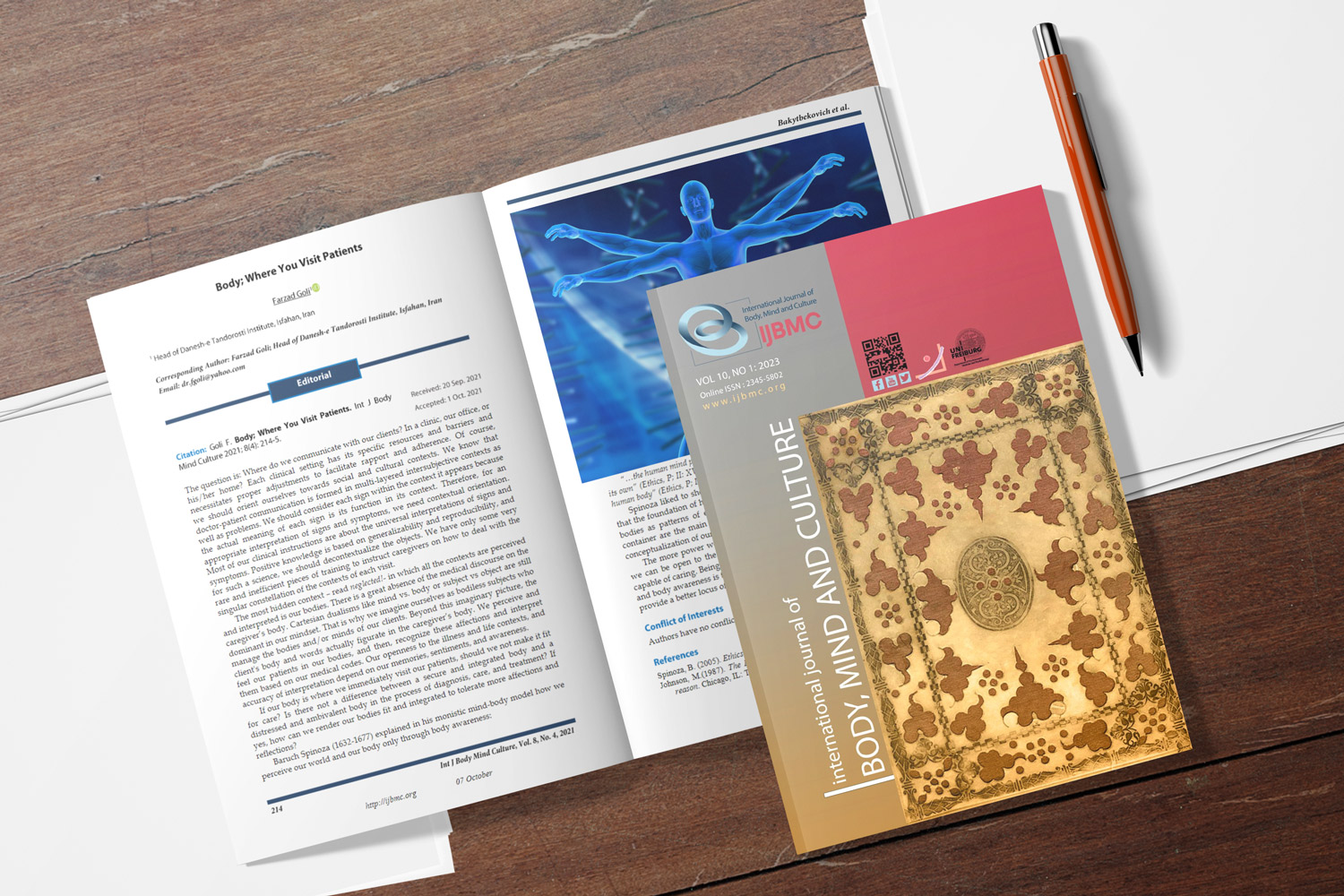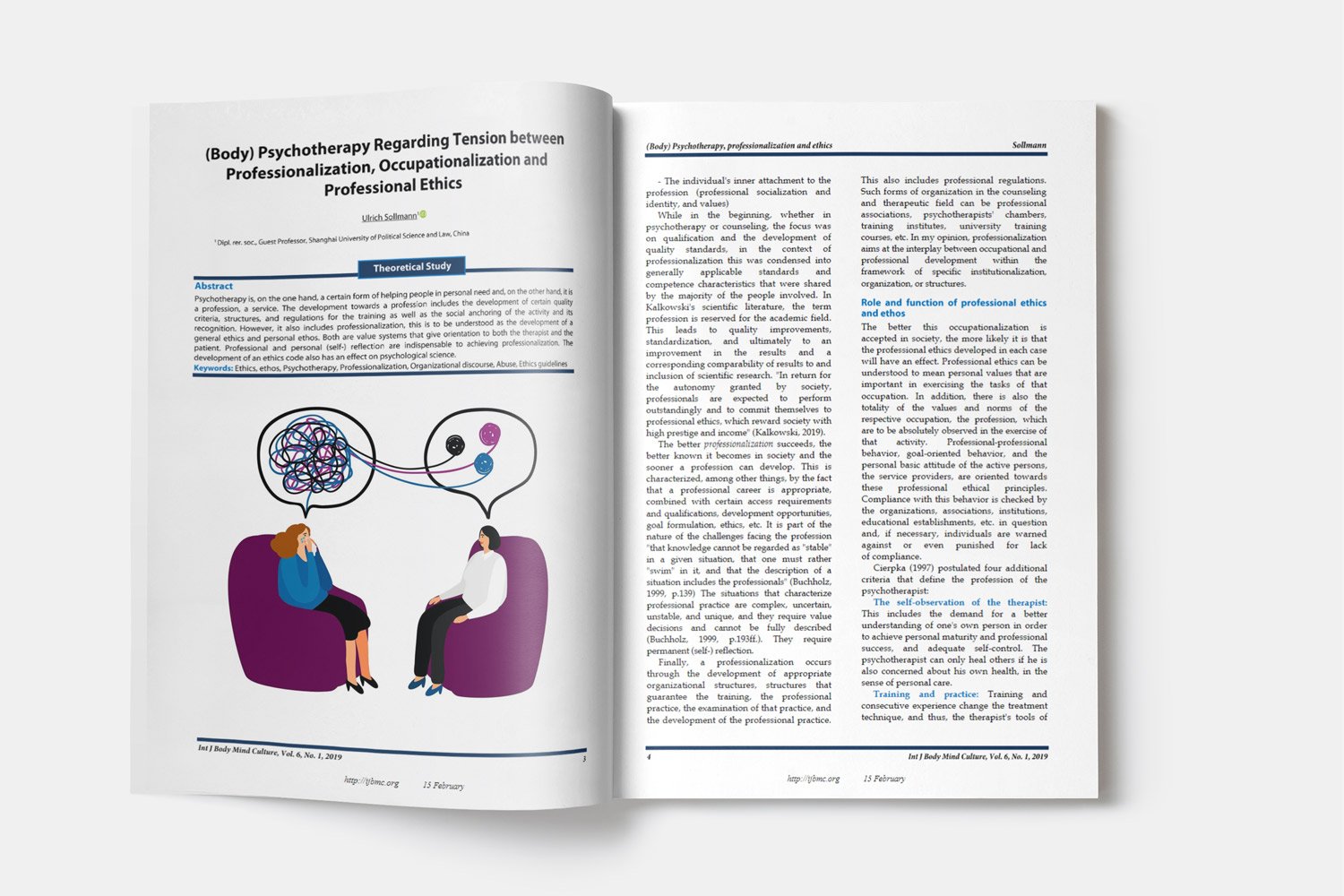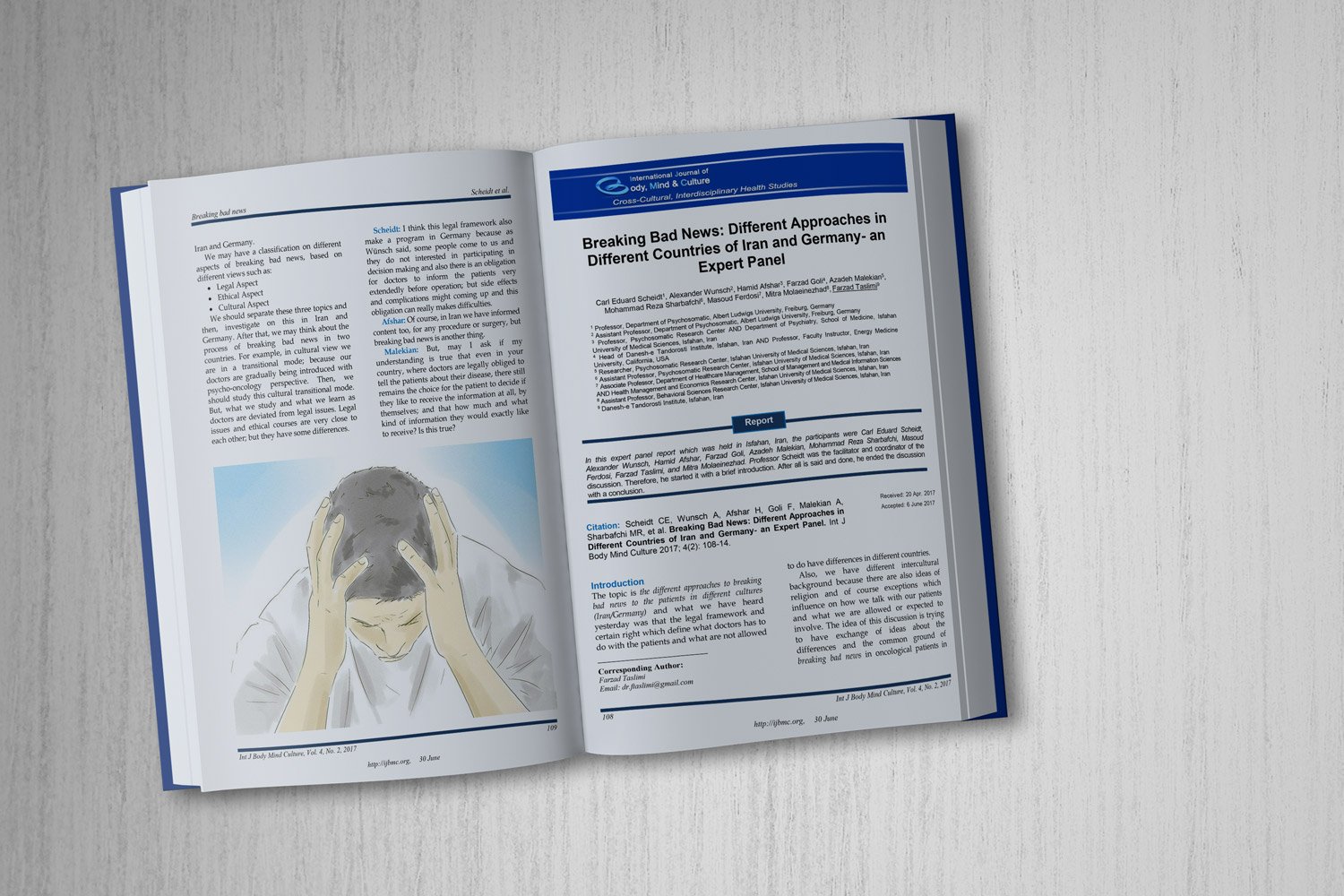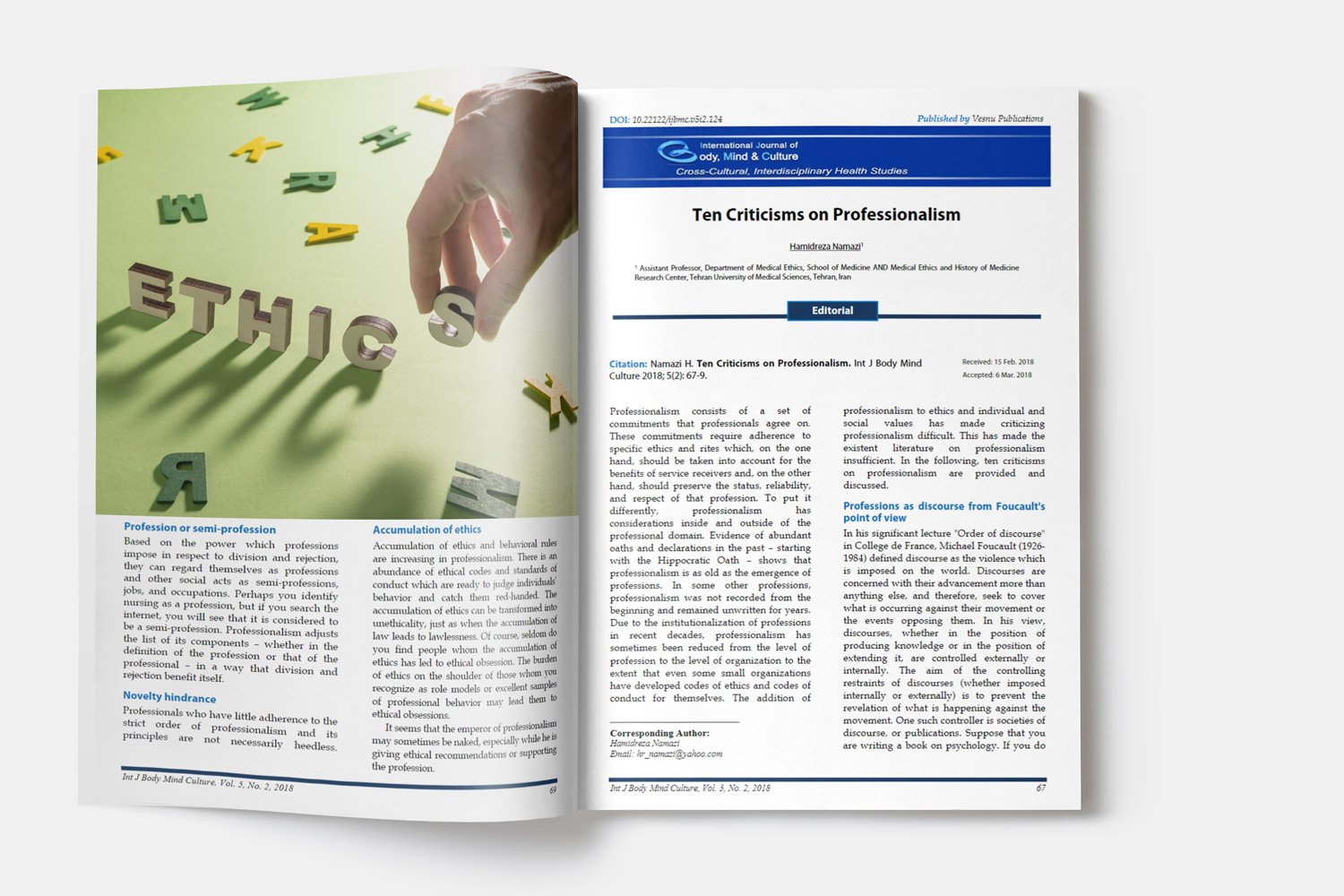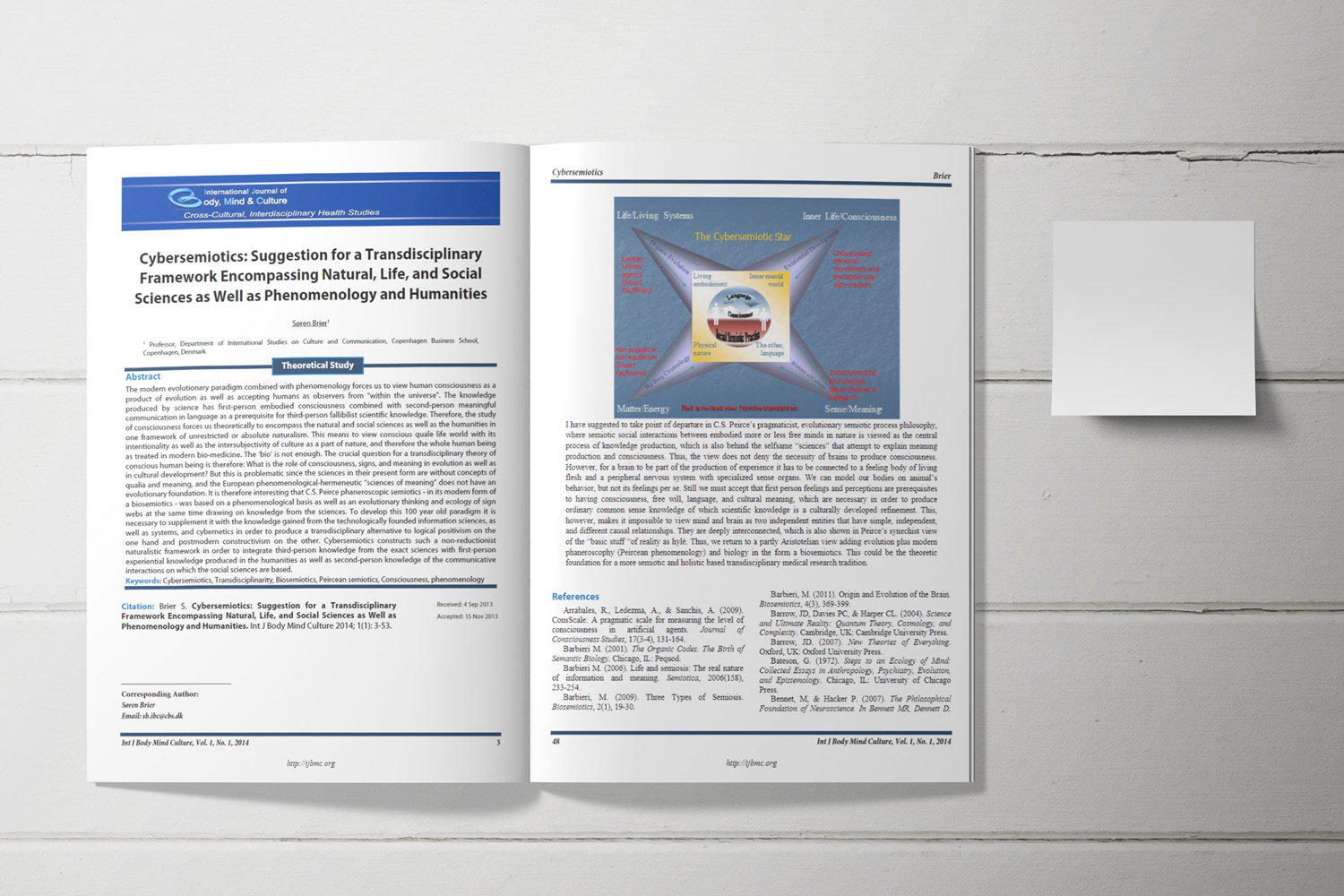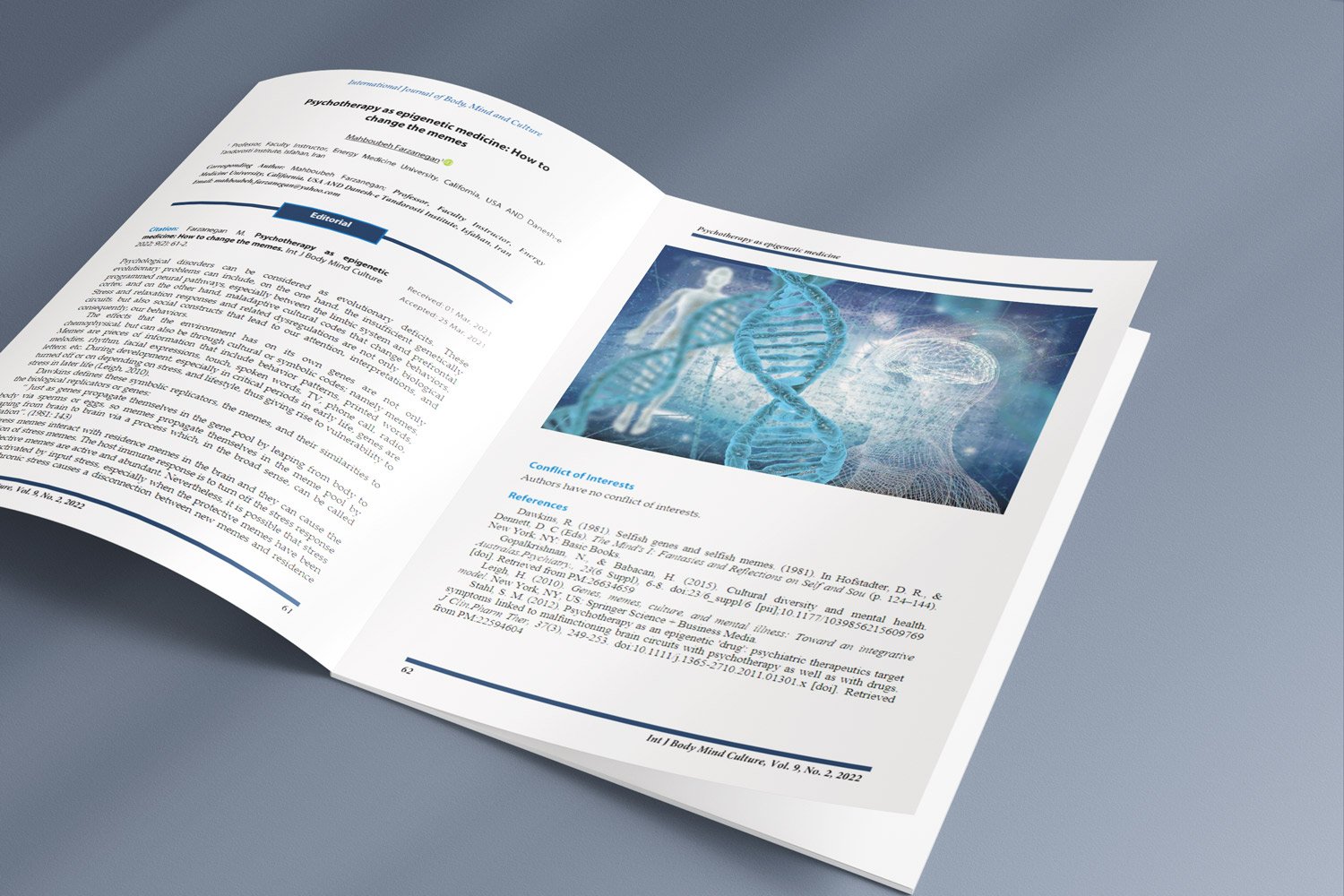A Structural Equation Model of Health Anxiety: The Roles of Fatigue, Spiritual Vitality, Social Support, and Lifestyle in Chronic Fatigue Syndrome
Downloads
Objective: This study aimed to model health anxiety based on chronic fatigue symptoms and spiritual vitality, considering the mediating roles of social support and lifestyle in patients with chronic fatigue syndrome (CFS).
Methods and Materials: A descriptive correlational study was conducted on a sample of 400 patients diagnosed with CFS in Tehran, selected using the Krejcie and Morgan sampling framework. Participants completed validated self-report instruments measuring health anxiety, chronic fatigue, spiritual vitality, social support, and lifestyle. Data were analyzed using SPSS-27 to compute Pearson correlations and AMOS-21 for Structural Equation Modeling (SEM). Assumptions of normality, linearity, multicollinearity, and outliers were confirmed before modeling.
Findings: Chronic fatigue symptoms had a significant direct positive effect on health anxiety (β = 0.41, p < .001), while spiritual vitality showed a significant direct negative effect (β = −0.37, p < .001). Both social support (β = −0.26, p < .001) and lifestyle (β = −0.32, p < .001) significantly mediated these relationships. The model demonstrated excellent fit indices (χ²/df = 2.60, GFI = 0.93, CFI = 0.95, RMSEA = 0.063). Total effects indicated that spiritual vitality was the strongest overall predictor of reduced health anxiety (β = −0.59), while chronic fatigue exerted an indirect and attenuated total effect (β = 0.16) through mediators.
Conclusion: The findings support a multidimensional model in which spiritual vitality and health-promoting lifestyle behaviors significantly buffer the psychological impact of chronic fatigue symptoms on health anxiety. Clinical interventions for CFS patients should incorporate strategies to enhance spirituality, strengthen social support, and promote lifestyle improvement to mitigate health-related anxiety.
Downloads
Dailey, D. L., Keffala, V., & Sluka, K. A. (2015). Do Cognitive and Physical Fatigue Tasks Enhance Pain, Cognitive Fatigue, and Physical Fatigue in People With Fibromyalgia? Arthritis care & research, 67(2), 288-296. https://doi.org/10.1002/acr.22417
Fahim, A. U., Liza, S. J., Lina, S. J., & Salim, M. A. A. (2022). Study of Mental Stress Related to Lifestyle During COVID-19: A Case Study of Bangladesh. International Journal of Education and Cognitive Sciences, 3(2), 30-41. https://doi.org/10.22034/injoeas.2022.160611
Gu, Z., Li, P., Zhang, A., Xu, X., & Gu, F. (2022). The Role of Mental Health and Sustainable Learning Behavior of Students in Education Sector Influences Sustainable Environment [Original Research]. Frontiers in Psychology, 13. https://doi.org/10.3389/fpsyg.2022.822751
Haggag, A. A. (2024). Multidimensional Fatigue Symptom Across Professions: A Comparative Study of Physicians, Engineers, and Teachers in Light of Demographic and Occupational Variables. https://doi.org/10.21203/rs.3.rs-5040002/v1
Hajiebrahim Araghi, B., Rahmani, M. A., & Rahimaghaee, F. (2024). Examining the Mediating Role of Body Esteem in the Relationship Between Social Body Anxiety and Health-Oriented Lifestyle in Women with Obesity. Psychology of Woman Journal, 5(3), 97-105. https://doi.org/10.61838/kman.pwj.5.3.12
Kamudoni, P., Johns, J., Cook, K. F., Salem, R., Salek, S., Raab, J., Middleton, R., Henke, C., & Amtmann, D. (2024). Measuring Fatigue in People With Multiple Sclerosis – Which Questionnaire Should Be Used? A Plain Language Summary of Publication. Neurodegenerative Disease Management, 14(1), 5-9. https://doi.org/10.2217/nmt-2023-0034
Keramati, M. R. (2021). A Comparison of Health-Related Quality of Life and Job Satisfaction in Physically Active and Sedentary Faculty Members. International Journal of Education and Cognitive Sciences, 2(3), 23-32. https://doi.org/10.22034/injoeas.2021.160725
Khabibullin, A. B., & Кочеткова, Е. А. (2023). Signs of Fatigue and Fatigue, Their Causes and Prevention. Scientific and Educational Basics in Physical Culture and Sports(2), 24-27. https://doi.org/10.57006/2782-3245-2023-10-2-24-27
Khanji, M. Y., Collett, G., Godec, T., Maniero, C., Ng, S. M., Siddiqui, I., Gupta, J., Kapil, V., & Gupta, A. (2023). Improved Lifestyle Is Associated With Improved Depression, Anxiety, and Well-Being Over Time in UK Healthcare Professionals During the COVID-19 Pandemic: Insights From the CoPE-HCP Cohort Study. General Psychiatry, 36(1), e100908. https://doi.org/10.1136/gpsych-2022-100908
Kuo, H. J., Huang, Y. C., Benner, A. D., & García, A. A. (2025). Latent Profile Analysis of Fatigue Subtypes in Adults With Type 2 Diabetes. Nursing research, 74(3), 193-198. https://doi.org/10.1097/nnr.0000000000000811
Lau, S. C., Bhattacharjya, S., Fong, M. W., Nicol, G. E., Lenze, E. J., Baum, C., Hardi, A., & Wong, A. W. (2022). Effectiveness of theory-based digital self-management interventions for improving depression, anxiety, fatigue, and self-efficacy in people with neurological disorders: A systematic review and meta-analysis. Journal of Telemedicine and Telecare, 28(8), 547-558. https://doi.org/10.1177/1357633x20955122
Lestari, I. D., Chirzun, A., & Nurhasanah, N. (2023). Analisis Kelelahan Kerja Menggunakan Fatigue Assessment Scale Pada PT. Indonesia Power Priok POMU. Metris Jurnal Sains Dan Teknologi, 23(02), 100-107. https://doi.org/10.25170/metris.v23i02.3897
Liang, T., Liu, Z., & Ding, X. (2024). Analysis of Equivalence Between Loading Rate and Stress Level of Fatigue Characteristics of Asphalt Mixture. Buildings, 14(10), 3102. https://doi.org/10.3390/buildings14103102
Loades, M. E., Rimes, K. A., Ali, S., Lievesley, K., & Chalder, T. (2017). The presence of co-morbid mental health problems in a cohort of adolescents with chronic fatigue syndrome. Clinical Child Psychology and Psychiatry, 23(3), 398-408. https://doi.org/10.1177/1359104517736357
Lu, C., Mo, J., Sun, R., Wu, Y., & Fan, Z. (2021). Investigation Into Multiaxial Character of Thermomechanical Fatigue Damage on High-Speed Railway Brake Disc. Vehicles, 3(2), 287-299. https://doi.org/10.3390/vehicles3020018
Mahdian, H., Tanhaye Reshvanloo, F., Zahmatkesh, Z., & Javidi, D. (2021). General health, psychological and social wellbeing: The role of personal and occupational factors. International Journal of Education and Cognitive Sciences, 2(3), 44-50. https://doi.org/10.22034/injoeas.2021.161048
Marck, C., De Livera, A. M., Weiland, T. J., Jelinek, P., Neate, S. L., Brown, C. R., & Jelinek, G. A. (2017). Pain in people with multiple sclerosis: Associations with modifiable lifestyle factors, fatigue, depression, anxiety, and mental health quality of life. Front Neurol, 8, 461. https://doi.org/10.3389/fneur.2017.00461
Nakao, M., Shirotsuki, K., & Sugaya, N. (2021). Cognitive–behavioral therapy for management of mental health and stress-related disorders: Recent advances in techniques and technologies. BioPsychoSocial Medicine, 15(1), 16. https://doi.org/10.1186/s13030-021-00219-w
Palotai, M., Cavallari, M., Healy, B. C., & Guttmann, C. R. (2020). A Novel Classification of Fatigue in Multiple Sclerosis Based on Longitudinal Assessments. Multiple Sclerosis Journal, 26(6), 725-734. https://doi.org/10.1177/1352458519898112
Shen, Q., Mu, Y., & Shin, P.-Y. (2024). Health Behavior Change in Post-Traumatic Stress Disorder: Patient Perspectives. Journal of Personality and Psychosomatic Research (JPPR), 2(3), 35-42. https://doi.org/10.61838/kman.jppr.2.3.6
Völker, I., Kirchner, C., & Bock, O. (2015). On the Relationship Between Subjective and Objective Measures of Fatigue. Ergonomics, 59(9), 1259-1263. https://doi.org/10.1080/00140139.2015.1110622
Walter, M., Kuijper, T. M., Hazes, J. M. W., Weel, A., & Luime, J. J. (2018). Fatigue in Early, Intensively Treated and Tight-Controlled Rheumatoid Arthritis Patients Is Frequent and Persistent: A Prospective Study. Rheumatology International, 38(9), 1643-1650. https://doi.org/10.1007/s00296-018-4102-5
Weaver, T. (2025). Association Between Tirzepatide and Fatigue and Functioning Based on Baseline Characterization: SURMOUNT-OSA Trials. Sleep, 48(Supplement_1), A338-A338. https://doi.org/10.1093/sleep/zsaf090.0780
Western, E., Nordenmark, T. H., Sorteberg, W., Karic, T., & Sorteberg, A. (2021). Fatigue After Aneurysmal Subarachnoid Hemorrhage: Clinical Characteristics and Associated Factors in Patients With Good Outcome. Frontiers in Behavioral Neuroscience, 15. https://doi.org/10.3389/fnbeh.2021.633616
xiaoqun, Q., & ye, C. (2022). The Effect of Student Fatigue on Teaching Quality: A Prospective Cohort Study Based on One University. https://doi.org/10.21203/rs.3.rs-2192821/v1
Yadav, I. N., & Thapa, K. B. (2019). Analysis of Fatigue Strain, Fatigue Modulus, and Fatigue Damage for the Model Formulation of Concrete Based on Strain Life Approach. Engineering, 11(09), 642-674. https://doi.org/10.4236/eng.2019.119043
Zhang, Q., Ruan, M., Singh, N. B., Huang, L., Zhang, X., & Wu, X. (2021). Progression of Fatigue Modifies Primary Contributors to Ground Reaction Forces During Drop Landing. Journal of Human Kinetics, 76, 161-173. https://doi.org/10.2478/hukin-2021-0052
Zhang, Z., Yu, Y., Zhao, H., & Tong, H. (2020). Effect of Loading Methods on the Fatigue Properties of Dissimilar Al/Steel Keyhole-Free FSSW Joints. Materials, 13(19), 4247. https://doi.org/10.3390/ma13194247
Copyright (c) 2025 International Journal of Body, Mind and Culture

This work is licensed under a Creative Commons Attribution-NonCommercial 4.0 International License.






